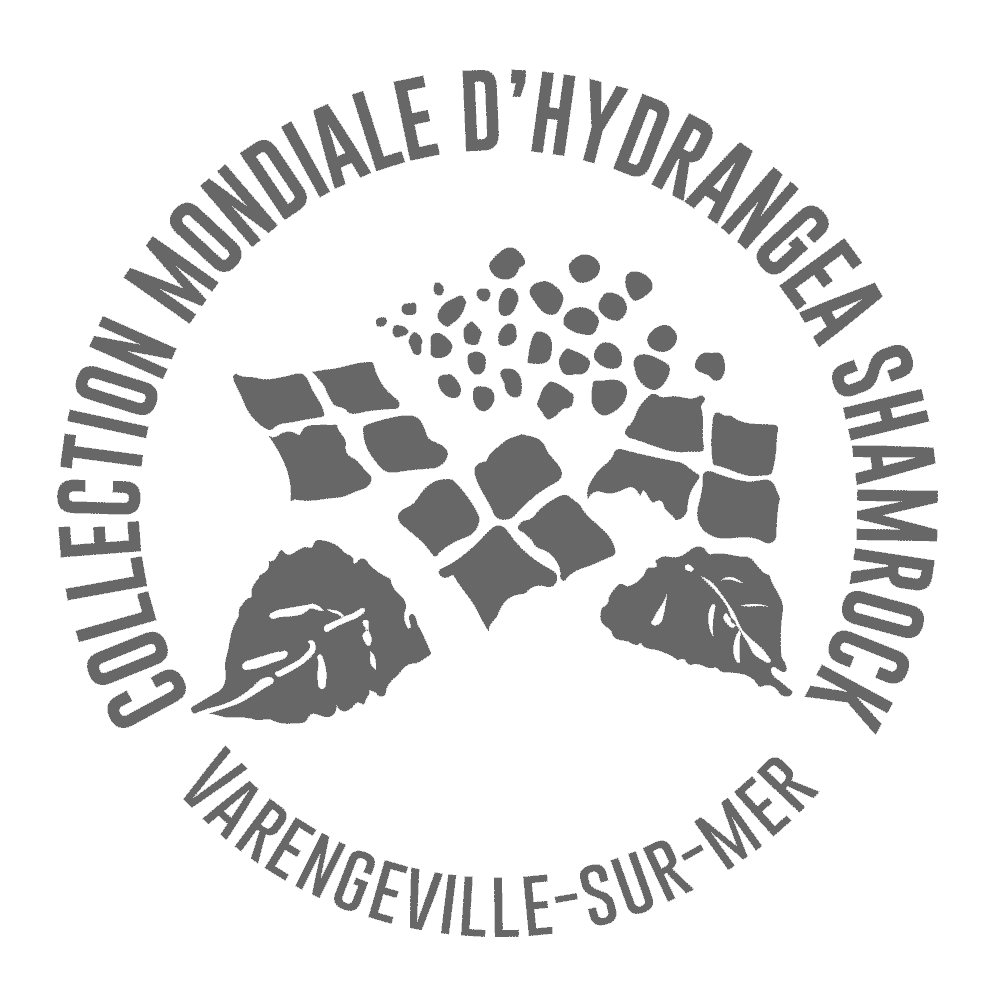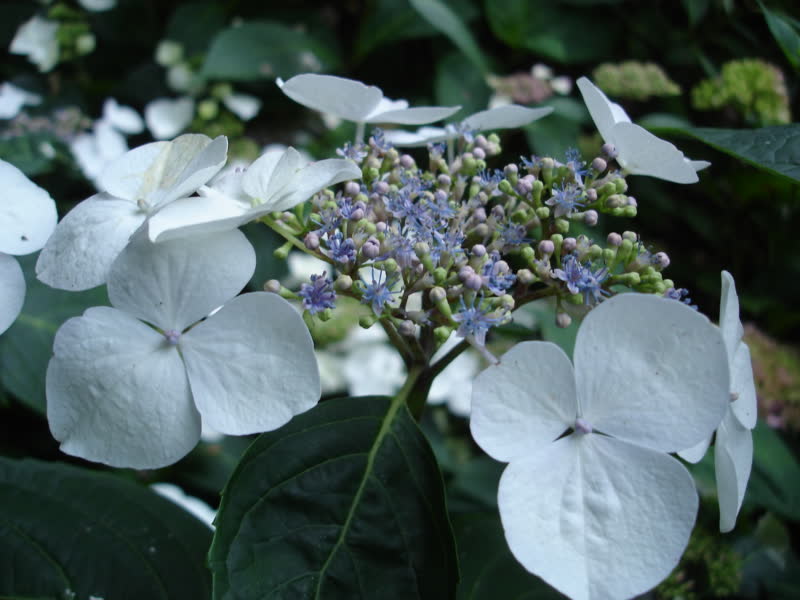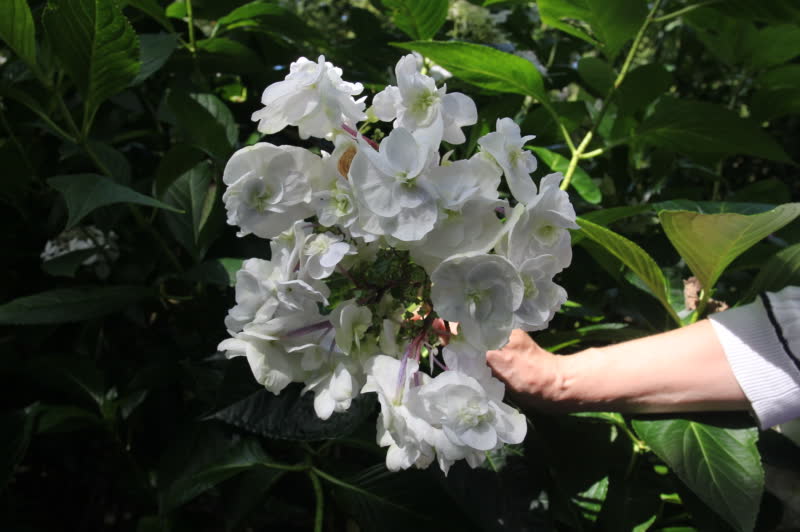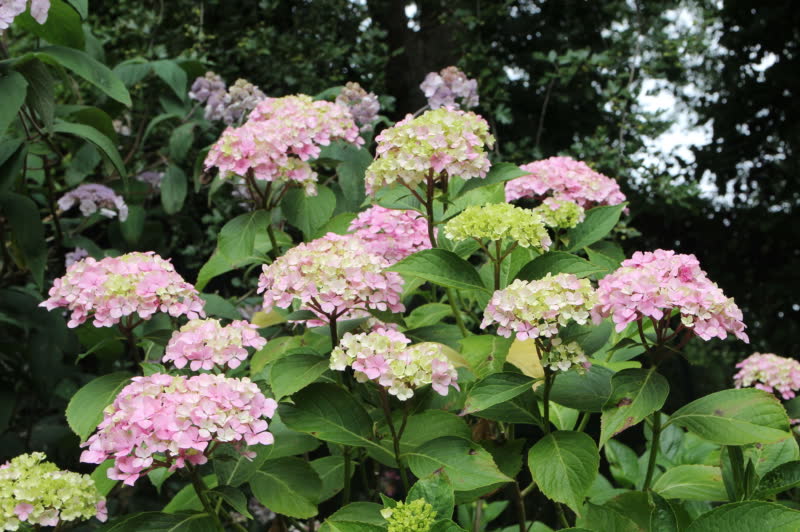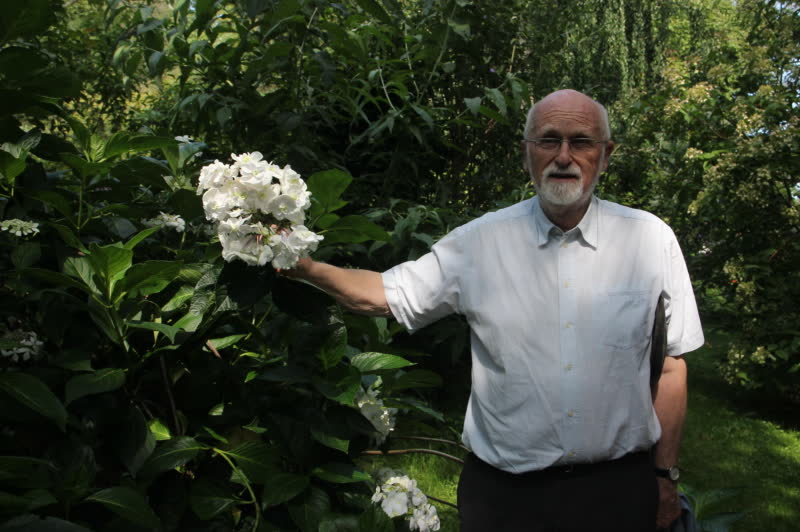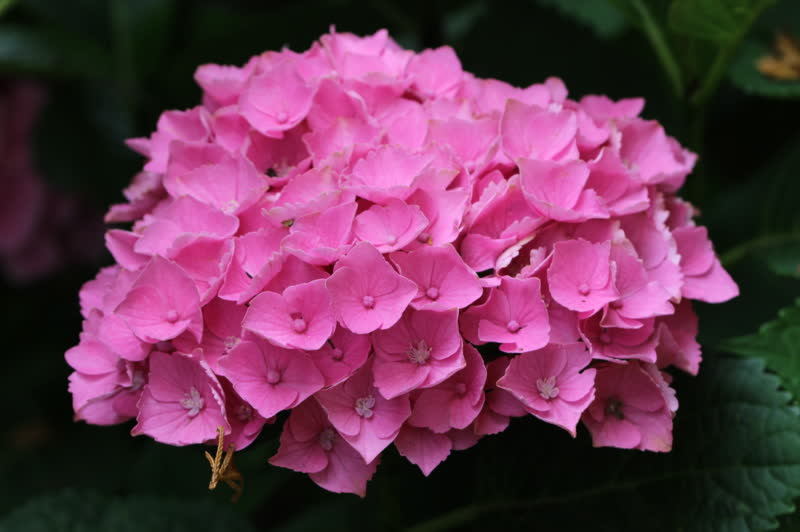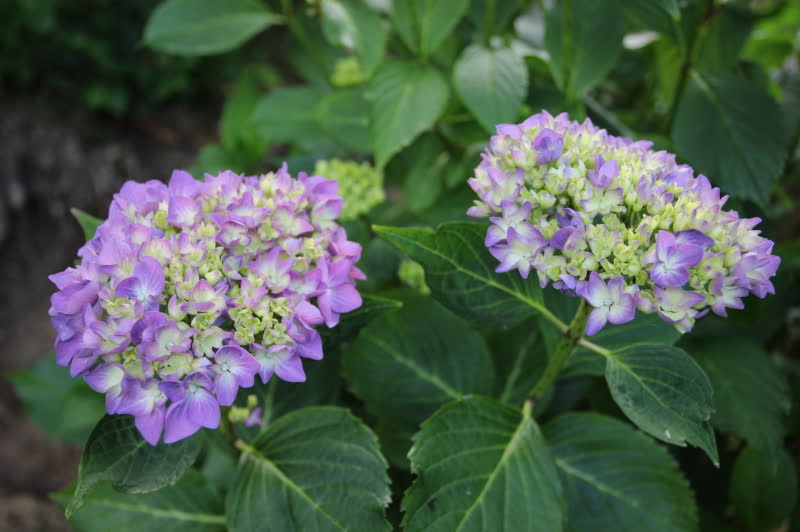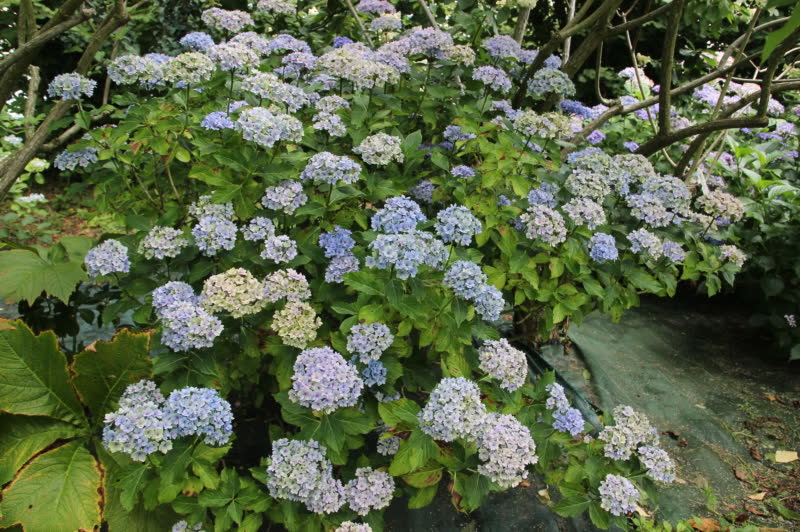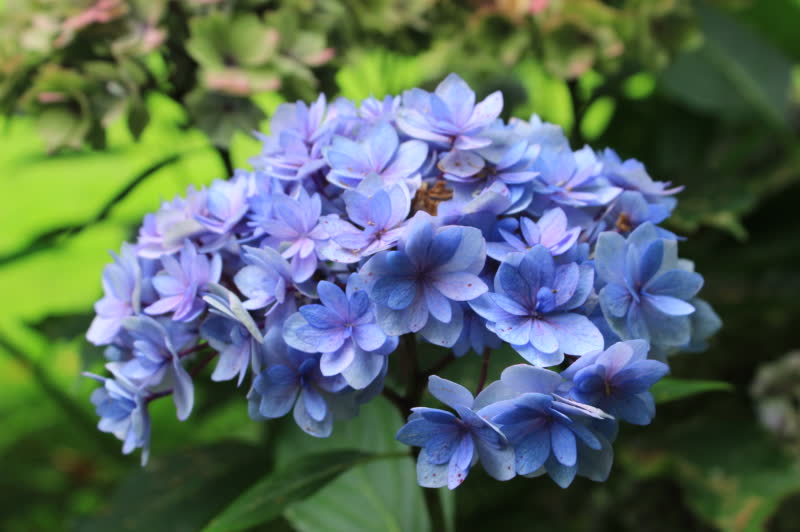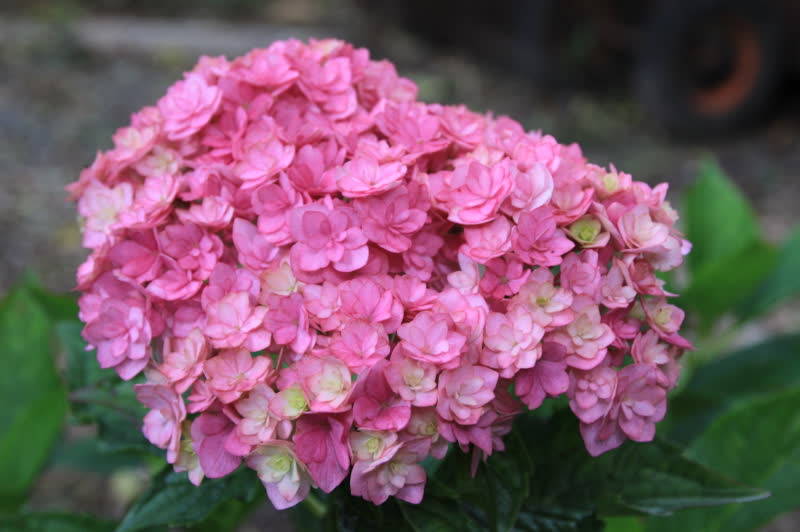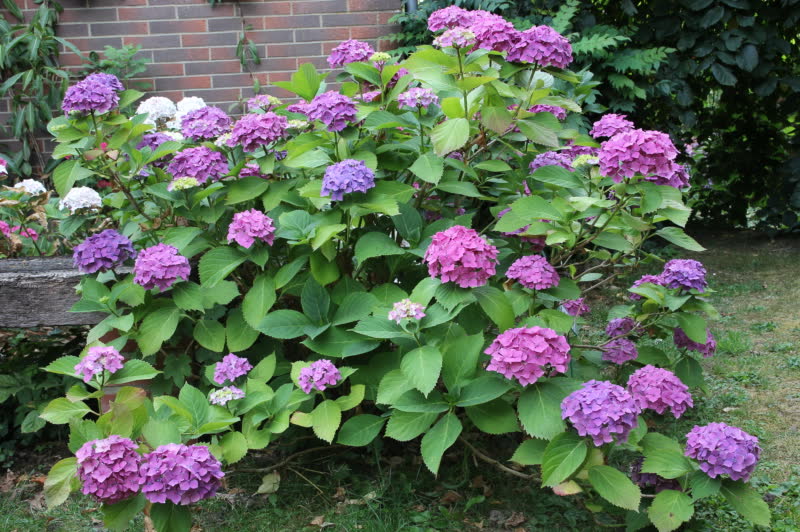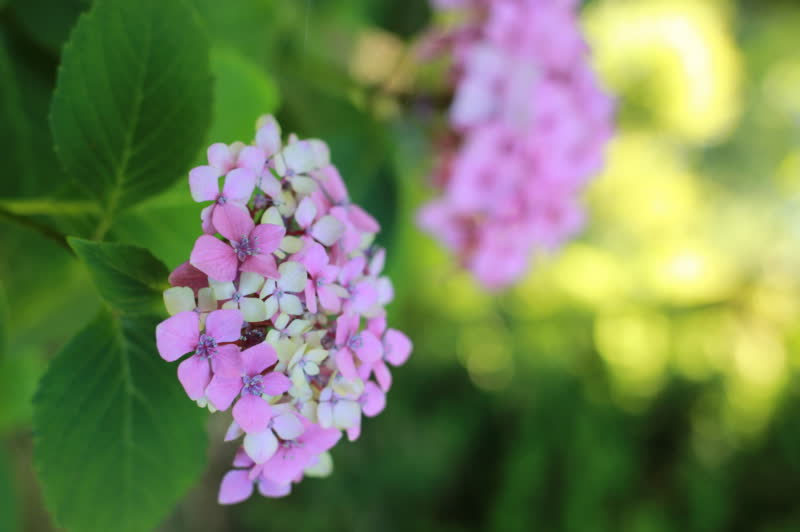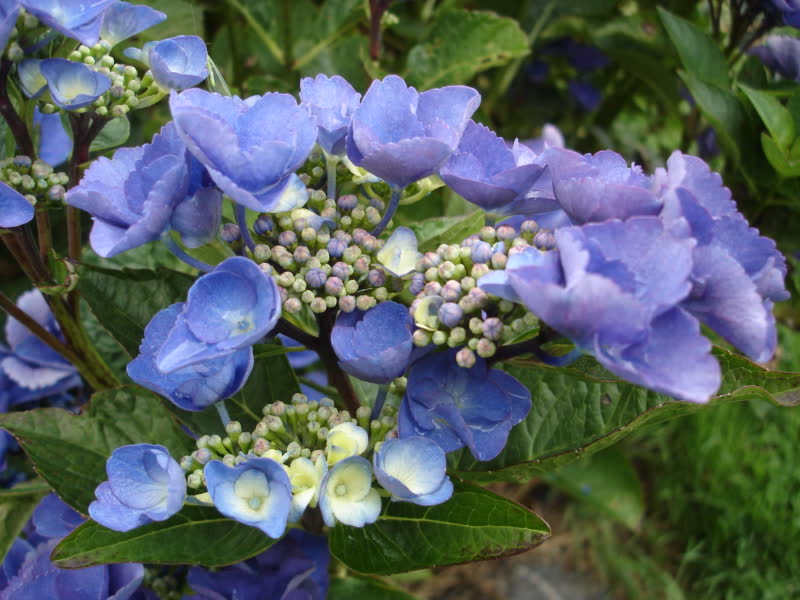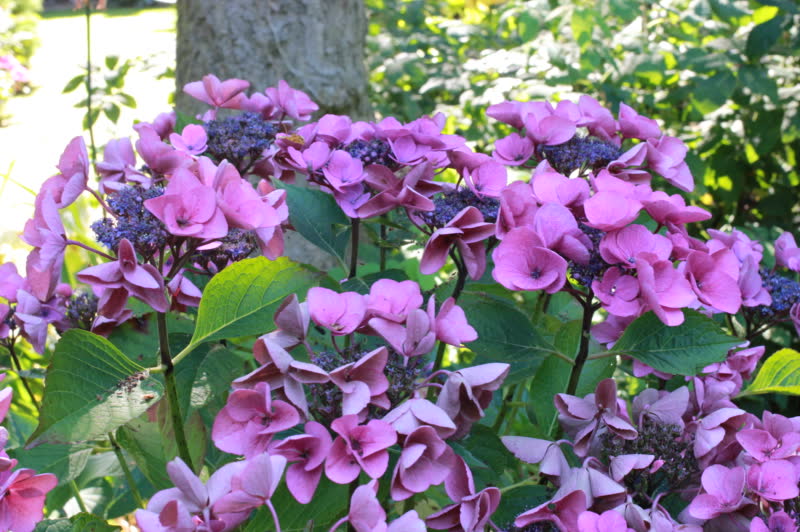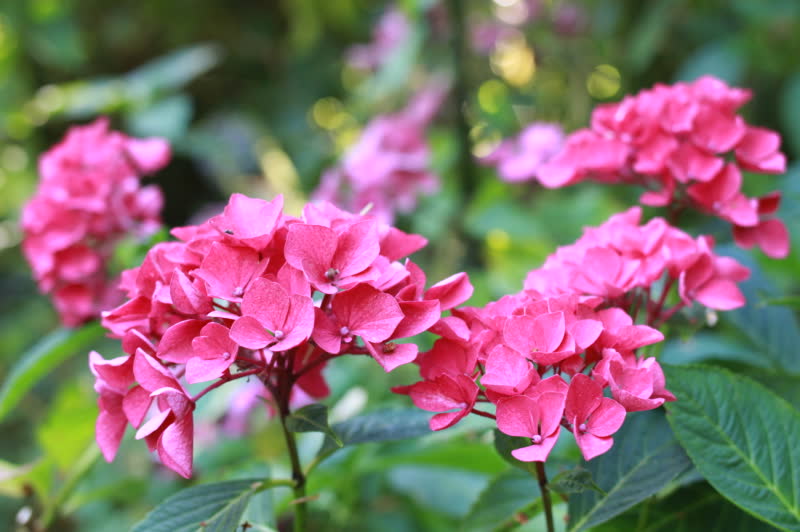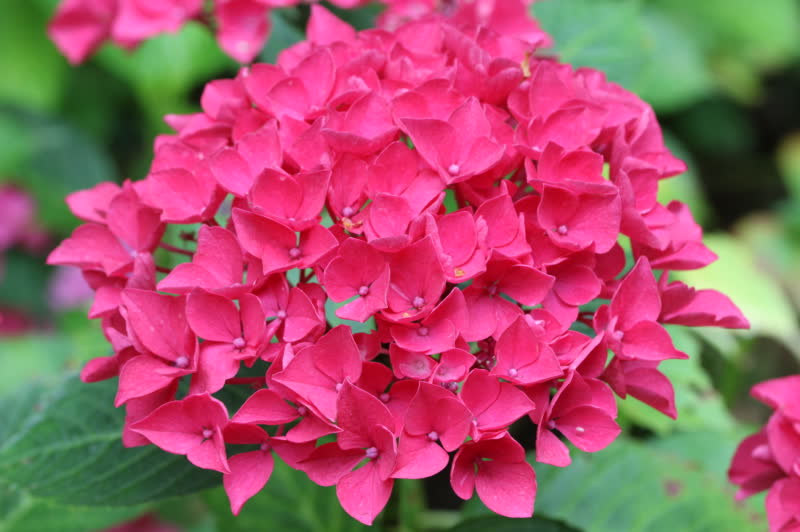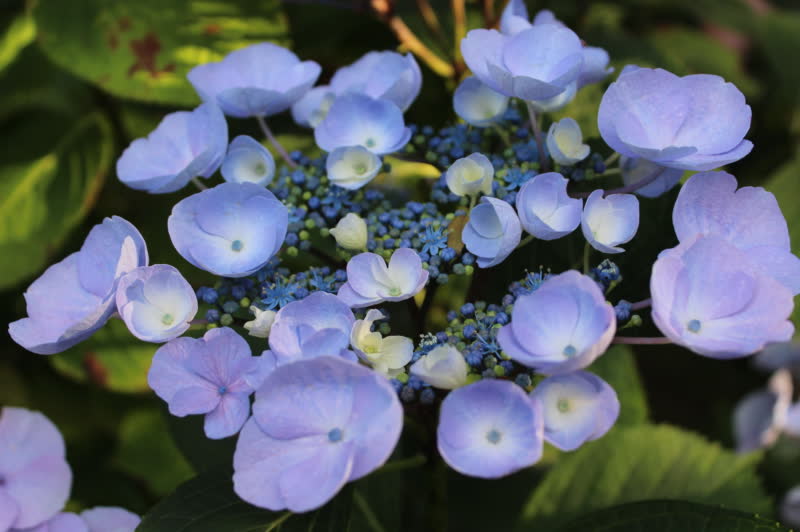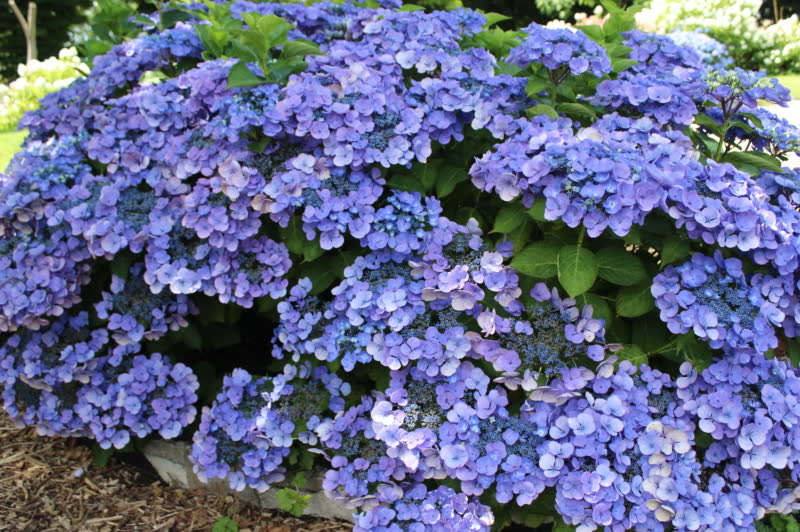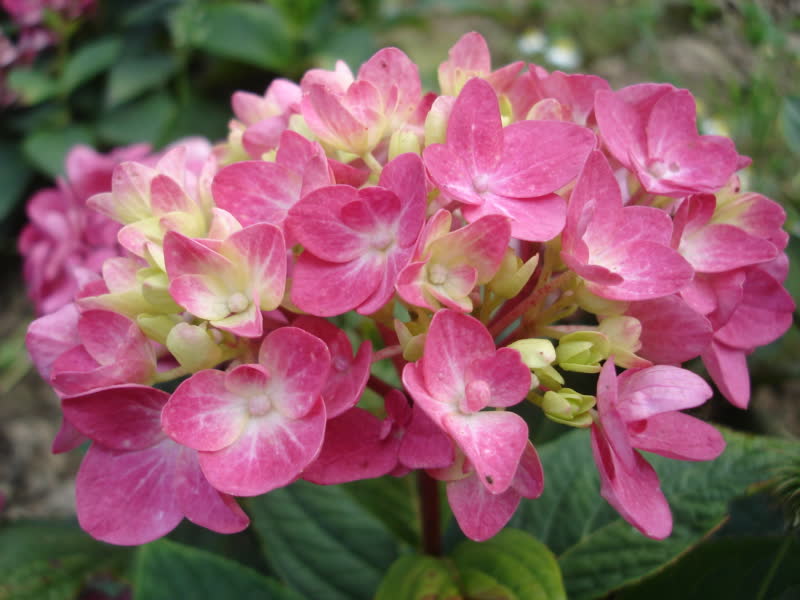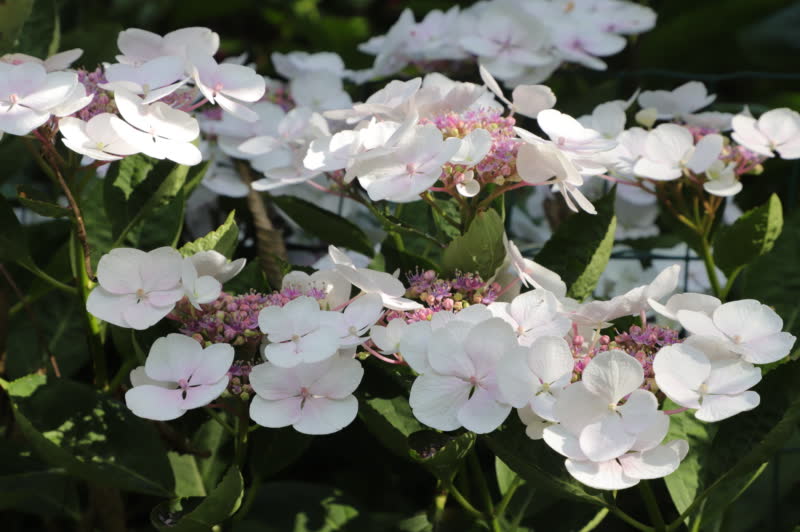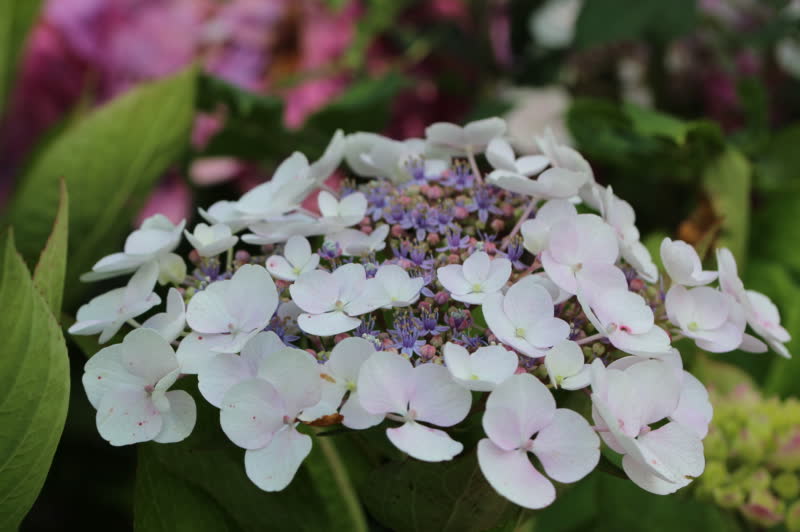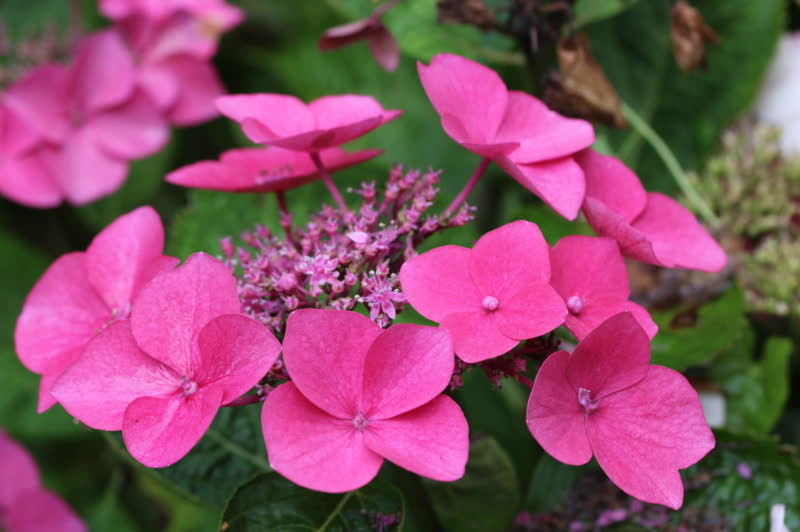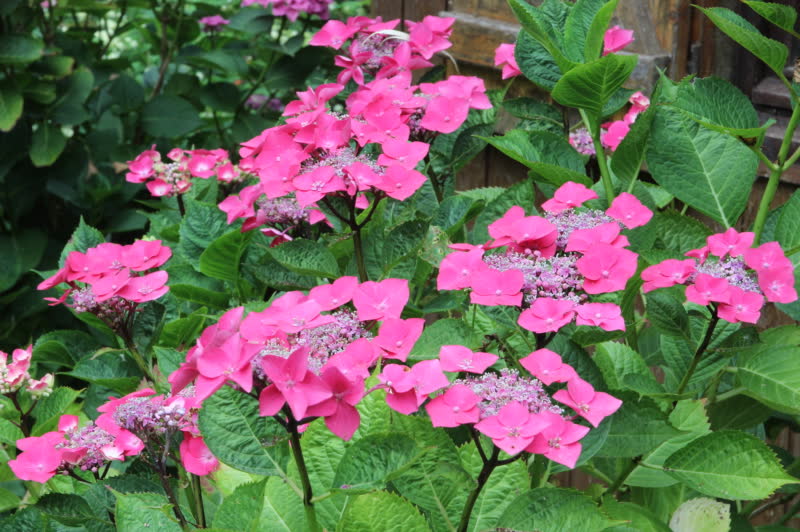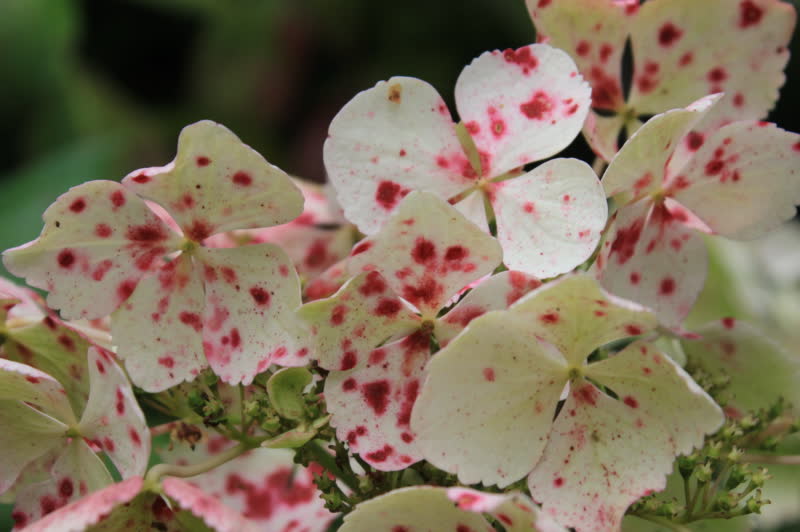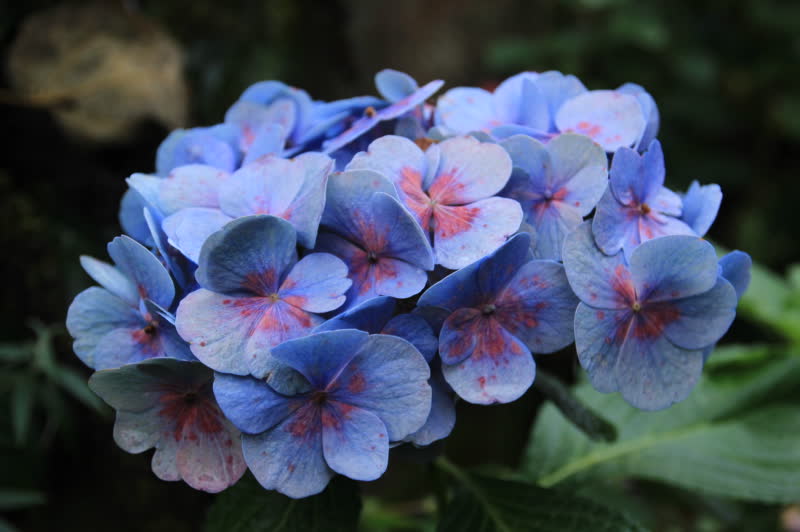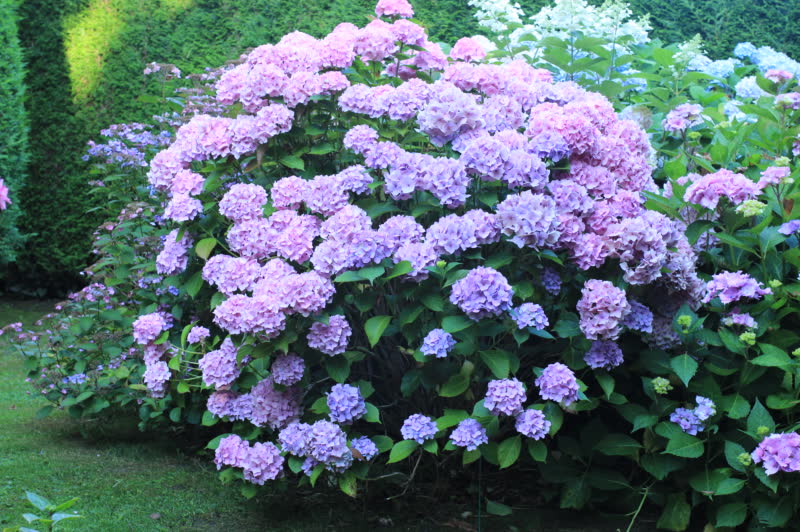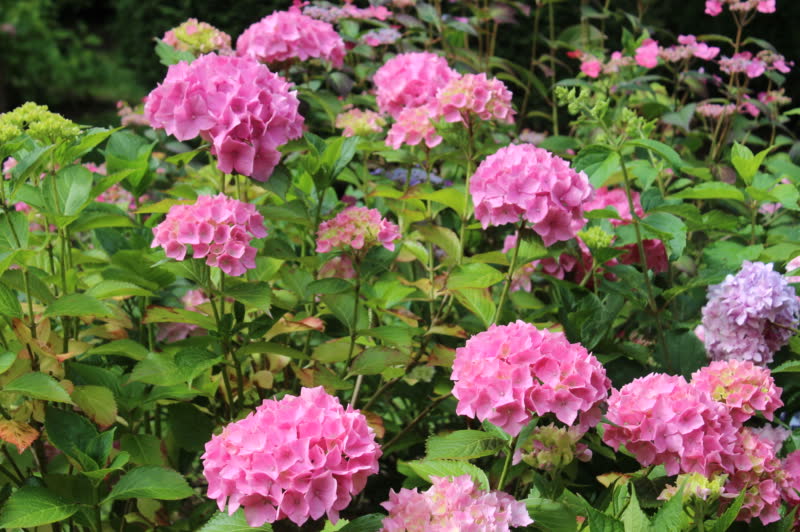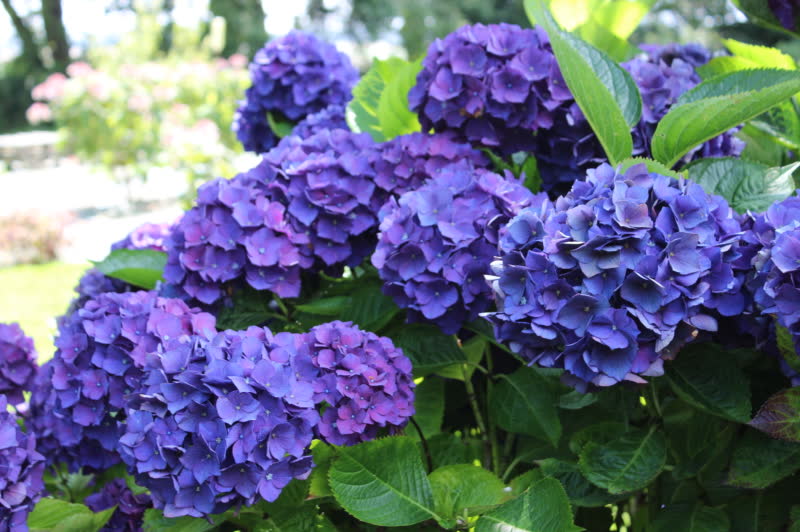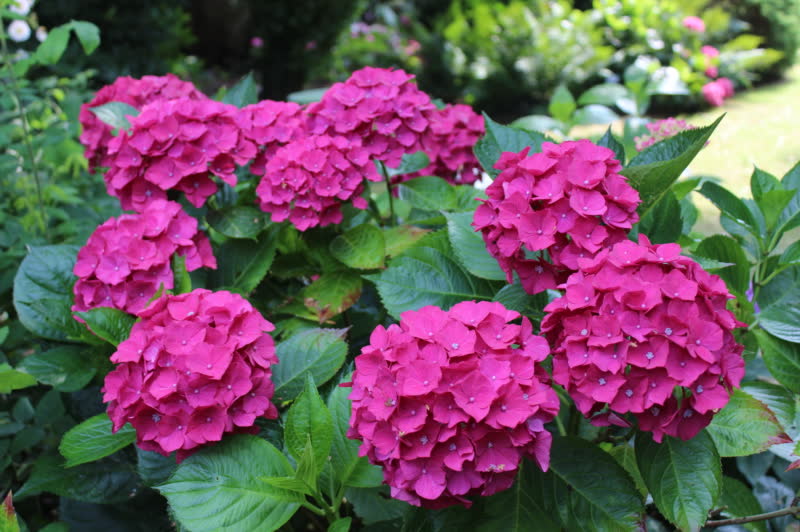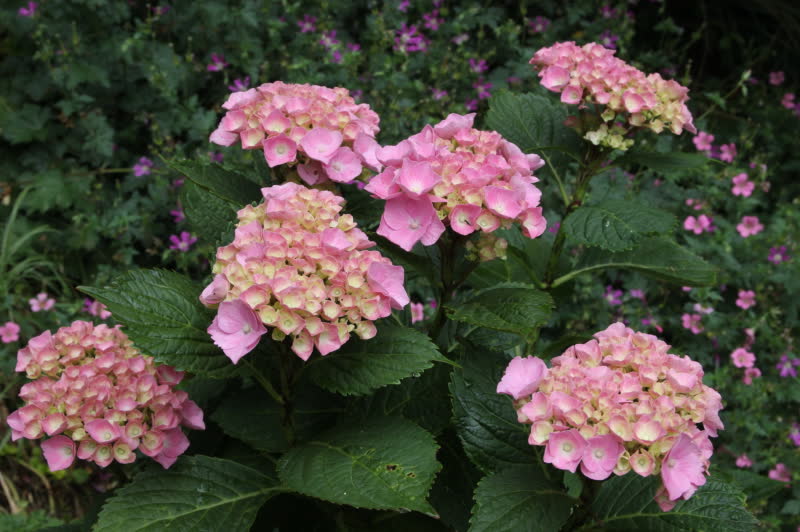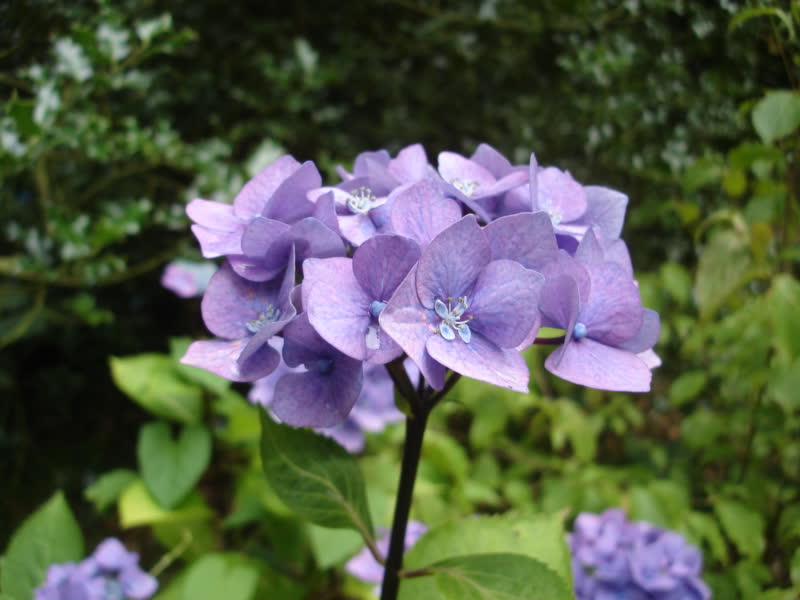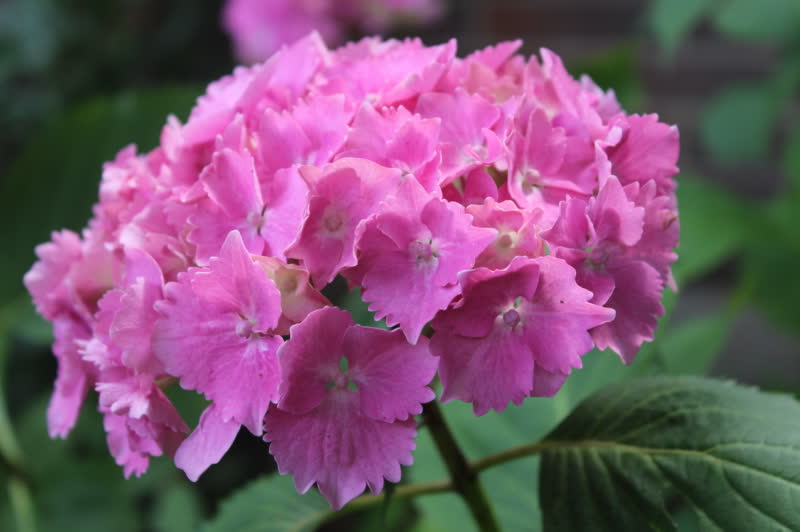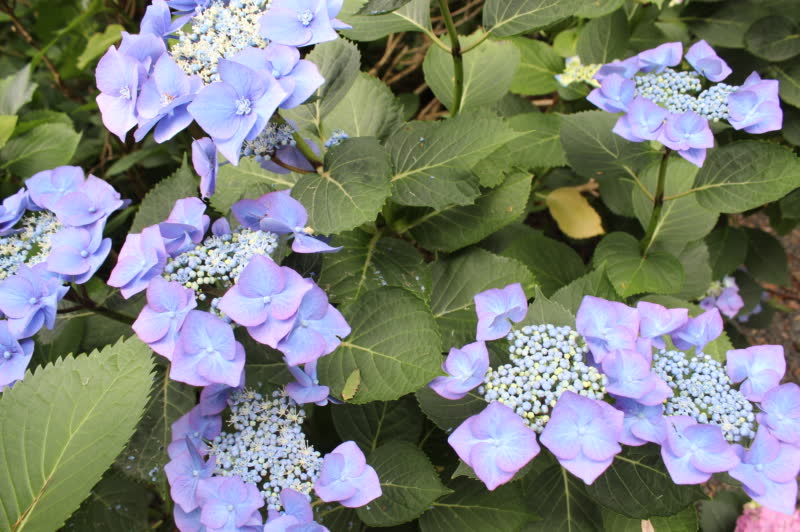A little Botany
Hydrangeas owe their name to their fruit in the shape of an antique water vessel (the term hydrangea comes from the Greek húdōr, « water » and angeîon, « vessel »).
Hydrangeas are best known through the species H. macrophylla and its hybrids, which have globular inflorescences and are colloquially known as ‘hortensias’ in French and other European languages. Many authors believed that this plant was named after a certain ‘Hortense’. In fact, this name was given by Philibert Commerçon to a Hydrangea macrophylla with globular inflorescences, because he had found it in the King’s Garden on Bourbon Island (Réunion). Indeed, in Latin, hortensia means « of the garden ».
Morphological characteristics:
Hydrangeas are woody shrubs, i.e., they retain their branches during the winter. Most have an upright habit. The tallest can reach a height of around ten metres, the smallest do not exceed one metre. Some species are climbers and cling to their support with aerial roots. These climbing species can grow to more than twenty metres above the ground. The leaves of hydrangeas are generally deciduous, but are evergreen in the Latin American and Philippine species. In all species, the older bark peels off.
Fertile and sterile flowers: Hydrangeas do not bear single flowers but flower clusters called inflorescences, which contain two types of flowers: fertile flowers, which are only a few millimetres in height and generally unspectacular, and sterile flowers, which are often around one to three centimetres in diameter; these are usually what give inflorescences their ornamental value, with their large sepals, which are much more highly developed than the petals.
Inflorescence shape: Depending on species, inflorescences can have the shape of ‘lacecaps’, ‘mopheads’ or ‘panicles’. There are now a very large number of books available for anyone interested in this subject, which this site cannot replace.
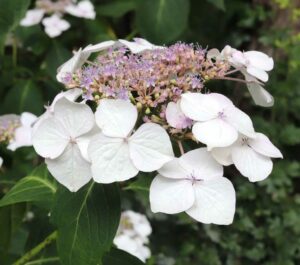 |
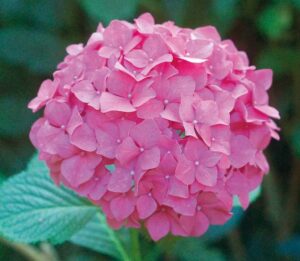 |
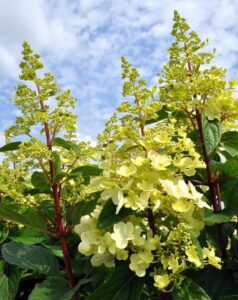 |
| Lacecaps | Morphead | Panicle |
Inflorescence colour: the colour of hydrangea inflorescences is confined to a single range: from blue to red, passing through all possible intermediate shades, from the lightest to the darkest. In coloured species, the colour can vary greatly depending on soil acidity. In very acid soil, flowers are blue. In less acid soil, flowers are purple or mauve. In almost neutral soil, flowers are red or pink. In fact, it is not the acidity of the soil itself which turns the colour blue, but the aluminium contained in the soil which can only be absorbed by the roots in acid conditions.
To find out much more, read the books by Corinne Mallet (see the “Corinne Mallet” page).
